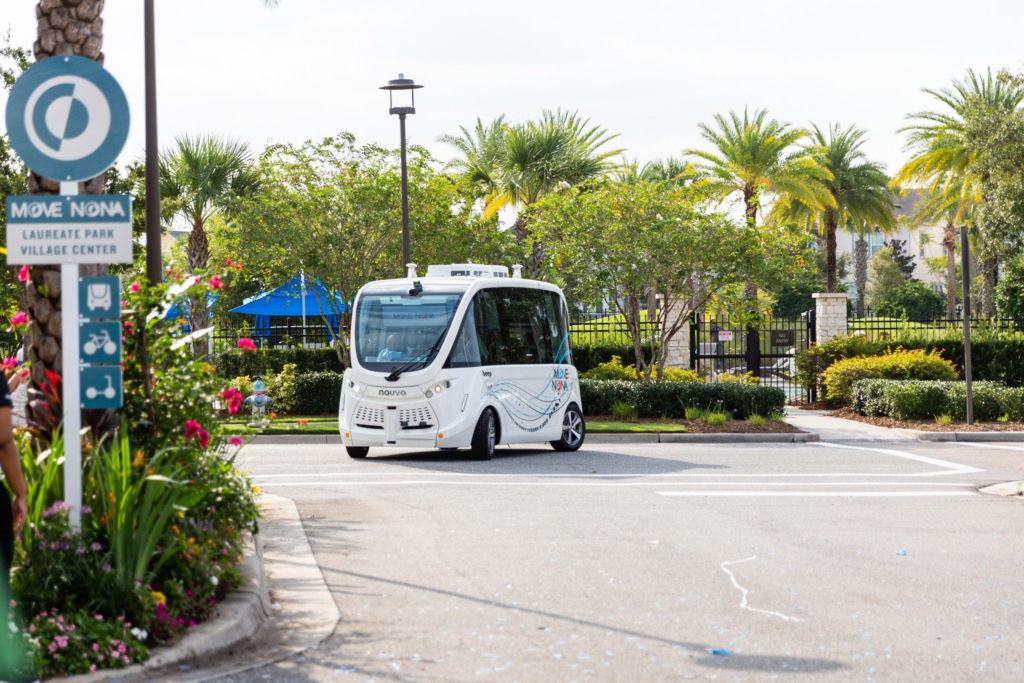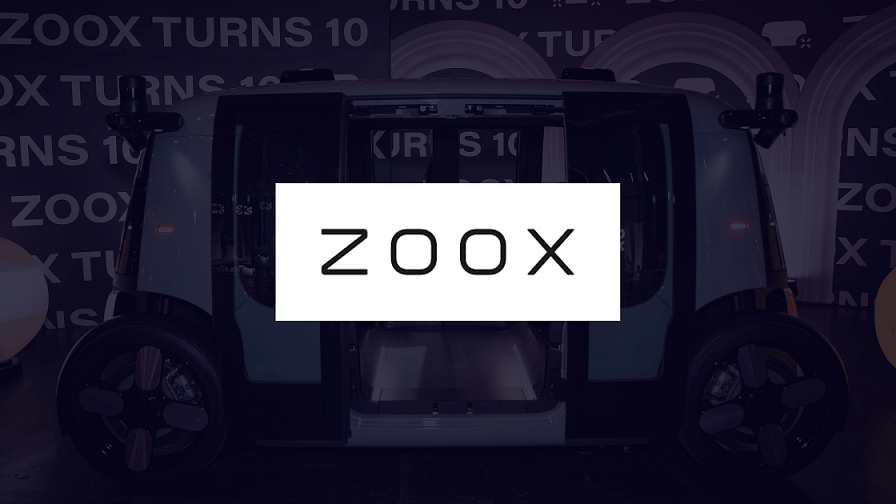The autonomous vehicle industry is fast gaining mainstream acceptance, and one of the companies quietly making an impact is Beep. Beep is an autonomous mobility-as-a-service (MaaS) provider that delivers first-mile and last-mile transportation utilizing self-driving, electric, multi-passenger vehicles.
Founded with a vision to redefine urban mobility, Beep focuses on providing safe, sustainable, and efficient solutions for public transportation, particularly in areas like campuses, residential communities, and business districts.
While larger names like Waymo and Cruise often dominate the headlines, Beep has been steadily expanding its footprint across the United States, partnering with local governments, private organizations, and tech innovators to roll out autonomous shuttle services. Their technology integrates seamlessly into real-world settings, offering users a glimpse into the future of transportation where traffic congestion, emissions, and the stress of commuting can be minimized.
Beep’s approach isn’t just about innovation; it’s also about inclusivity. By providing an accessible transit option, they aim to bridge gaps in underserved areas, offering reliable transportation where traditional options might be lacking.
Also, with electric vehicles at the heart of their service, Beep contributes to reducing carbon footprints and promoting eco-friendly alternatives to conventional transit.
Let’s explore ten interesting key facts about Beep and how they are revolutionizing autonomous mobility.
Key Facts About Beep (Things to Know)
Here are ten interesting things to know about Beep:
1. Founding and Origin Story

Beep, Inc., was founded in 2018 with a mission to transform urban transportation through driverless, electric, multi-passenger vehicles. The company emerged from the vision of its founders—CEO Joe Moye, chairman Kevin Reid, and Lead Board of Director Rodney Rodgers—who recognized the potential of autonomous technology to enhance mobility while addressing environmental concerns.
The founders aimed to create a sustainable transportation solution that would not only reduce carbon emissions but also provide safe and efficient transit options for communities.
Beep’s journey began in a small garage, where the founders worked tirelessly to develop their vision into a viable business model. They focused on creating proprietary autonomous driving technology and securing initial funding from venture capitalists. The early stages were marked by significant research and development efforts, which were crucial for establishing the company’s technological footprints.
Shortly after its inception, Beep secured its first round of funding, which allowed it to invest in technology development and operational expansion.
2. Partnership with NAVYA

Beep began its collaboration with NAVYA in 2019, focusing on deploying autonomous shuttles across various locations in the United States. NAVYA, a French manufacturer known for its innovative autonomous vehicles, provided Beep with the technology and vehicles necessary to establish a foothold in the fast-growing autonomous transit market.
In October 2023, Beep announced a contract to purchase eight additional NAVYA autonomous shuttles, bringing its total fleet to 22 vehicles. This expansion was crucial for Beep as it responded to increasing demand for autonomous transportation solutions across the U.S. The new shuttles enabled Beep to enhance first-mile/last-mile connectivity and support diverse applications, including services in planned communities, urban centers, universities, and airports.
3. Beep’s First Mile and Last Mile Model

Beep operates a first-mile and last-mile transportation model, unlike some other self-driving companies trying to cover long distance routes.
When we talk about “first-mile” and “last-mile” transportation, we’re referring to the start and end points of a typical journey. For example, getting from your home (first mile) to a bus stop or transit station, and from that station to your final destination, like a workplace or shopping center (last mile).
These short distances can often be the hardest part of a commute, especially in suburban or semi-urban areas where public transportation options are limited or inconvenient. This is where Beep’s driverless shuttles come in. By taking this approach, Beep is not only improving mobility for individuals but also helping to reduce traffic congestion and reliance on personal vehicles, which contributes to the overall sustainability of transportation networks.
4. Focus on Autonomous Shuttles in Controlled Environments

Beep’s primary focus is on deploying autonomous electric shuttles in controlled, low-speed environments such as residential communities, business parks, airports, and campuses. Unlike other AV companies that target chaotic city streets, Beep emphasizes safe and predictable operations in areas where traffic is minimal, which reduces risks and regulatory challenges.
5. Testing and Deployment in The Villages, Florida

The Villages is a large, active adult community located in central Florida, known for its extensive network of golf carts, walking paths, and recreational facilities. With a population exceeding 130,000 residents, many of whom are retirees, the community presents unique transportation challenges and opportunities.
Beep initiated its autonomous shuttle pilot program in The Villages in 2021, focusing on providing safe and efficient transportation options for residents. This initiative aligns with Beep’s mission to enhance mobility through innovative technology while addressing the needs of aging populations.
The shuttles deployed in The Villages are electric and equipped with advanced safety features, including multiple cameras and sensors that allow for real-time navigation and obstacle detection.
Initially launched as a fare-free service, the program encourages residents to utilize the shuttles without financial barriers, thereby promoting adoption and gathering valuable user feedback.
6. Fully Electric Shuttle Rides

Beep’s driverless shuttle rides are fully electric. The company emphasizes sustainability as a core component of its operations, which is evident in its deployment of electric autonomous shuttles across various locations, including Lake Nona and Mississippi State University.
The preference for fully electric driverless rides are inspired by Beep’s commitment to eco-friendly transportation solutions. These shuttles help reduce carbon emissions compared to traditional gasoline-powered vehicles, aligning with broader sustainability goals in urban planning and community development.
7. Fleet Specification

Beep’s autonomous electric shuttles are designed to operate without a safety driver. Level 4 autonomy at its finest. The shuttles are designed to accommodate up to 11 passengers, including an onboard attendant for safety and assistance. They operate on fixed routes within designated areas, ensuring efficient and reliable service while maintaining a maximum speed limit of 15 miles per hour. This makes them ideal for controlled environments, reducing the risk of accidents and ensuring safe travel in areas with low-speed traffic.
Also, Beep’s shuttles are equipped with ramps and wide doors to accommodate passengers with mobility impairments, including those using wheelchairs. The fleet uses advanced autonomous technology that includes LIDAR sensors, high-resolution cameras, and GPS for real-time navigation and obstacle detection. This technology allows the shuttles to detect pedestrians, cyclists, and other vehicles on the road, ensuring safe and smooth operations.
Each shuttle is equipped with redundant steering, braking, and power systems. This means if one system fails, a backup system takes over, ensuring continued safe operation.
8. Partnership with Lake Nona for Smart City Initiatives

Beep plays a key role in Lake Nona’s Smart City initiative in Florida. Lake Nona is a 17-square-mile master-planned futuristic community located near Orlando, Florida, developed by Tavistock Group. Known for its emphasis on health, wellness, and technology, Lake Nona has positioned itself as a “living lab” for innovation, attracting various companies and startups focused on smart technologies.
Beep entered into a partnership with Tavistock Group to implement autonomous shuttle services as part of Lake Nona’s broader Move Nona initiative. Launched in September 2019, this initiative aimed to provide residents and visitors with efficient transportation options while reducing reliance on personal vehicles.
The primary goal was to create a seamless transportation network that connects key destinations within the community, including residential areas, schools, medical facilities, and recreational spaces. By utilizing electric shuttles, Beep aims to reduce carbon emissions and traffic congestion, aligning with Lake Nona’s sustainability goals.
9. Current Status

Today, Beep operates from its headquarters in Lake Nona, Florida, employing around 100 individuals. The company has successfully transported over 100,000 passengers through its services and continues to innovate within the field of autonomous mobility. With over $63 million raised across multiple funding rounds, including a recent $25 million Series A round led by ABS Capital Partners, Beep is well-positioned for future growth.
The company has undertaken self-driving pilot testing across several cities and institutions including Lake Nona, Mississippi State University, Cumberland Commuity Improvement District (CID), Georgia, Jacksonville, Florida, etc.
10. Autonomous Vehicles Without Steering Wheels

Beep’s shuttles are fully autonomous and do not have steering wheels or pedals. This is a significant departure from many AV designs that include traditional controls for human intervention. The company partnered with ZF to develop next-generation shuttles that utilize advanced artificial intelligence software known as the “Virtual Driver.” This technology processes vast amounts of data to derive safe driving strategies, effectively replacing the need for human driving inputs such as steering and braking.
Beep’s shuttle rides are true Level 4 futuristic autonomous vehicles.
Conclusion
Beep is rapidly becoming a major player in the field of autonomous mobility, offering innovative solutions for first- and last-mile transportation through its fleet of electric, driverless shuttles. As communities and industries worldwide look for more efficient, sustainable, and accessible ways to move people, Beep stands at the forefront of this evolution.
The company’s focus on safe, low-speed, and emission-free transport aligns with broader trends in the mobility sector, where autonomy is expected to reshape how we commute, travel, and experience urban environments.
Autonomous vehicles are fast becoming mainstream, and companies like Beep are essential to this growth.
You May Also Like:
- 10 Fascinating Things About Nvidia (Key Facts)
- Ten Amazing Things to Know About Waymo in 2024
- 10 Intriguing Things to Know About GM’s Cruise
- 10 Interesting Things to Know About Kodiak Robotics in 2024
- Ten Things to Know About Aurora Innovation in 2024

I’m Dr. Brandial Bright, also known as the AVangelist. As a dedicated and passionate researcher in autonomous and electric vehicles (AVs and EVs), my mission is to educate and raise awareness within the automotive industry. As the Founder and Managing Partner of Fifth Level Consulting, I promote the adoption and innovation of advanced vehicle technologies through speaking engagements, consulting, and research as we progress to level 5 fully autonomous vehicles.







